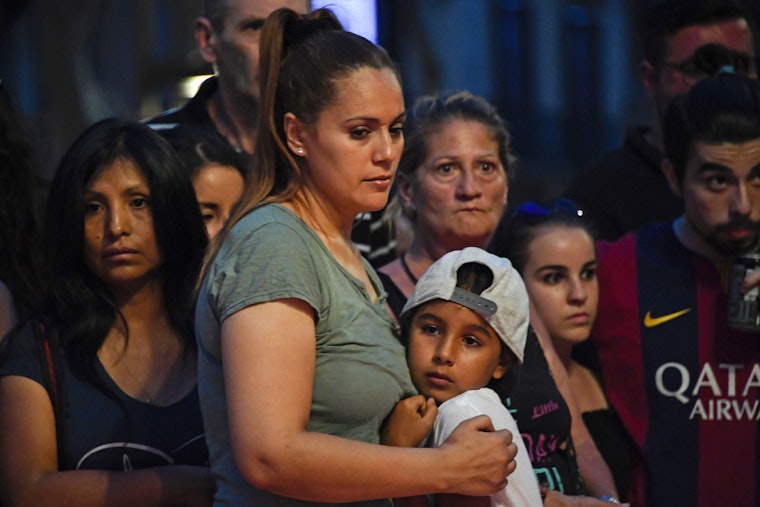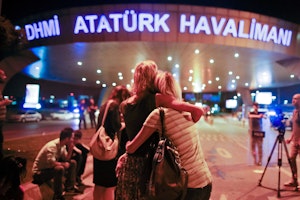The Truth About Terror and Youth Radicalization
By Cristina Goni

Our Barcelona office was enjoying a stunning summer’s day when we heard the sirens.
A young man had plowed a van into a crowd of people on the iconic La Rambla, just a few hundred yards from our office. My colleagues and I had barely enough time to process the extremist atrocity at Charlottesville—but here was a new tragedy, unfolding on our doorstep.
During the three hours that police confined us to our office, I mulled the rise in violent extremism among today’s youth. It would later emerge that 12 young men between 17 and 23 were behind the Barcelona attack, declaring themselves soldiers of the Islamic State (ISIS).
In the aftermath of the Barcelona attack, I had the opportunity to discuss with local stakeholders and analyze dozens of articles hypothesizing over how a group of seemingly well-integrated youths in the bucolic Catalan town of Ripoll could have become homegrown ISIS terrorists.
Families and local authorities in Ripoll asked themselves where they had failed and why they hadn’t seen the process of “radicalization.” But when the public desperately seeks neat and simple answers, it often misses the complexity and ambiguity of the radicalization process.
To tackle the recruitment of young women and men by ISIS, we must look at a broad spectrum of factors, including social and economic inequality, political polarization, globalization, declining levels of trust in institutions, disaffection, belonging and identity crises, and discrimination.
While structural issues—including discrimination, alienation, and socioeconomic concerns, or individual factors, such as belonging and identity—affect both men and women, the specific impacts were highly gendered.
For 15 years, I have worked as a policy analyst of security and criminal justice policies and advocated for informed counterterror measures that respect human rights. These are the lessons I draw from the Catalan experience on countering youth radicalization:
Reject inflammatory and polarizing narratives.
Fear and loathing of the unknown “other” fuels hatred—the underlying emotional driver of radical ideologies such as jihadism, white supremacy, and fascism. The relentless drive from media and social media to feed audiences incendiary information they like rather than the measured information they need has increased the polarization of our societies and made it increasingly difficult to see the full picture and understand alternative points of view.
Individuals can now find other radicals in online fora rather than debate with their immediate peers or family, enabling hate speech to circulate freely in certain circles. And when such speech is accepted or excused by political or religious leaders catering to these groups, it can become mainstreamed among the public and in the media.
In addition to countering Islamophobic rhetoric, figures of authority must avoid inflammatory and warlike narratives that inject a sense of crisis and feed such hate speech. Instead, they should uphold the values of respect, pluralism, inclusiveness, and openness. They should highlight living examples of these values as much as possible.
Create security policy through an inclusive, participatory process.
Violent extremism should not be tackled solely through measures conceived by law enforcement, intelligence services, and the military. An effective response would mean bringing members of the affected community together with policymakers and creating a multilayered plan that takes on all of the forces that lead to radicalization.
We can learn from Belgium’s Bart Somers, mayor of Mechelen and winner of 2016’s World’s Best Mayor award, who presided over a stunning decrease in crime and far-right extremism. “The key,” Somers said during a presentation in Barcelona, “is inclusive policy. Create a new narrative for your society, a new story, a new identity. Fight segregation and translate it into policy addressing the vulnerable community and the Muslim community; they too are victims of this. We need to avoid criminalizing and categorizing an entire community.”
Analyze emerging local narratives and create alternatives to them.
In general, violent extremist groups use existing youth grievances to their advantage. They engage young people worldwide by providing an outlet for their disaffection and frustration.
To interrupt the process of radicalization before it turns to violence and terrorism, we need to understand how ISIS’s violent radical narrative spreads and why it works. One effective prevention strategy has been to let young people hear criticism of ISIS from their former combatants, their families, and the victims of violent extremism.
Build plural, diverse, and multicultural collective identities.
A family member of one of the Barcelona attackers said of the terrorists, “All of them were well integrated here. All of them spoke Catalan, went to school and [had] jobs. But here in Ripoll, we are and will always be los moros” (a racial slur for people of Arab descent). As long as Western societies have an implicitly white and Eurocentric understanding of their own identity, and as long as people with migrant backgrounds are treated as “the other,” there will be room for extreme hate discourse, which in turn breeds disaffection.
Authorities should promote community identity on the basis of values, rather than ethnicity, nationality, or culture. This can address the reasons young people find greater integration and recognition in the “digital caliphate” than in their own communities and everyday life.
Support youth participation, empowerment, and community outreach.
Young people provide extremely valuable information on the key drivers and root causes of violent extremism in their local communities. They should become key partners for policymakers and law enforcement. Young people should be consulted on public policy through focus groups and should be asked how their gender, age, religion, race, socioeconomic status, and geographic background affect their experiences of security and insecurity.
Through political participation, communities and young people become familiar with advocacy and build skills to think independently, to reflect critically on extreme narratives, and to challenge them.

Cristina Goñi is the regional manager for advocacy for Open Society–Europe and Central Asia.


